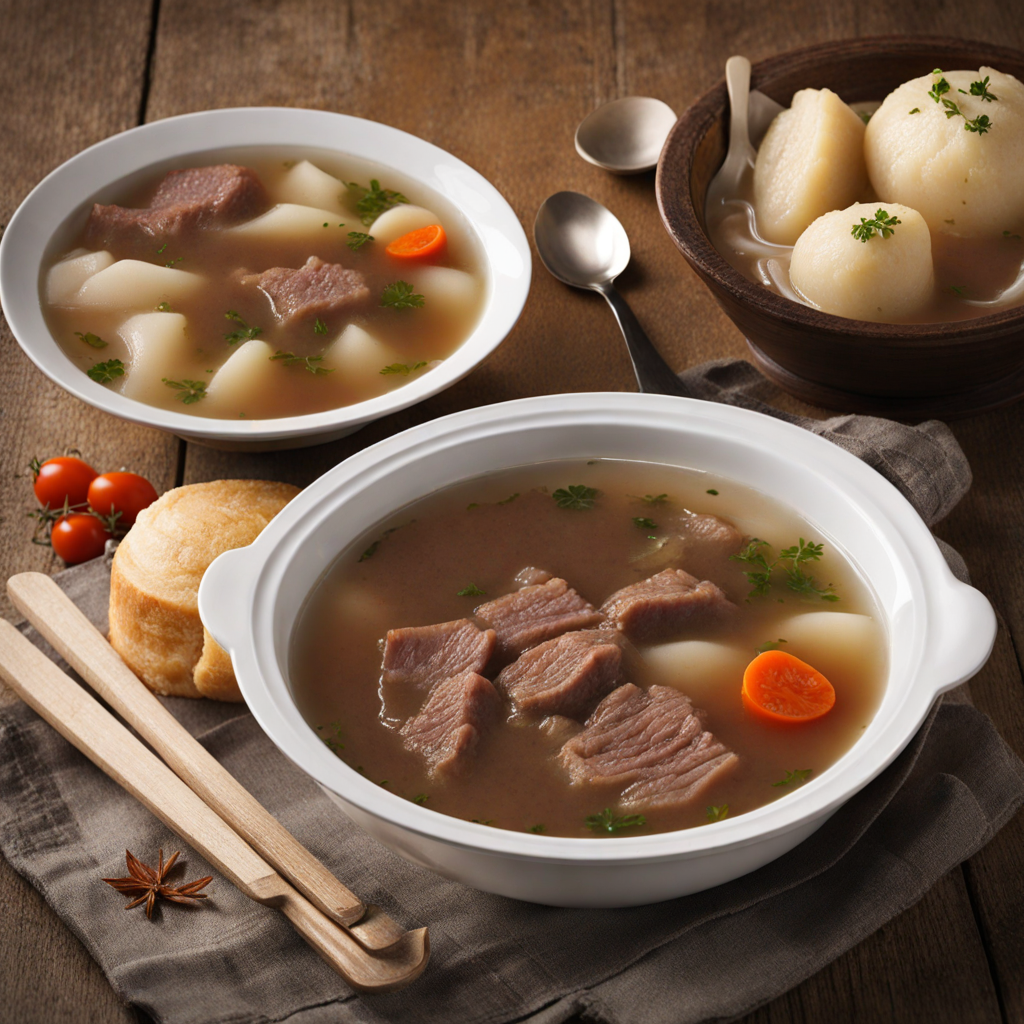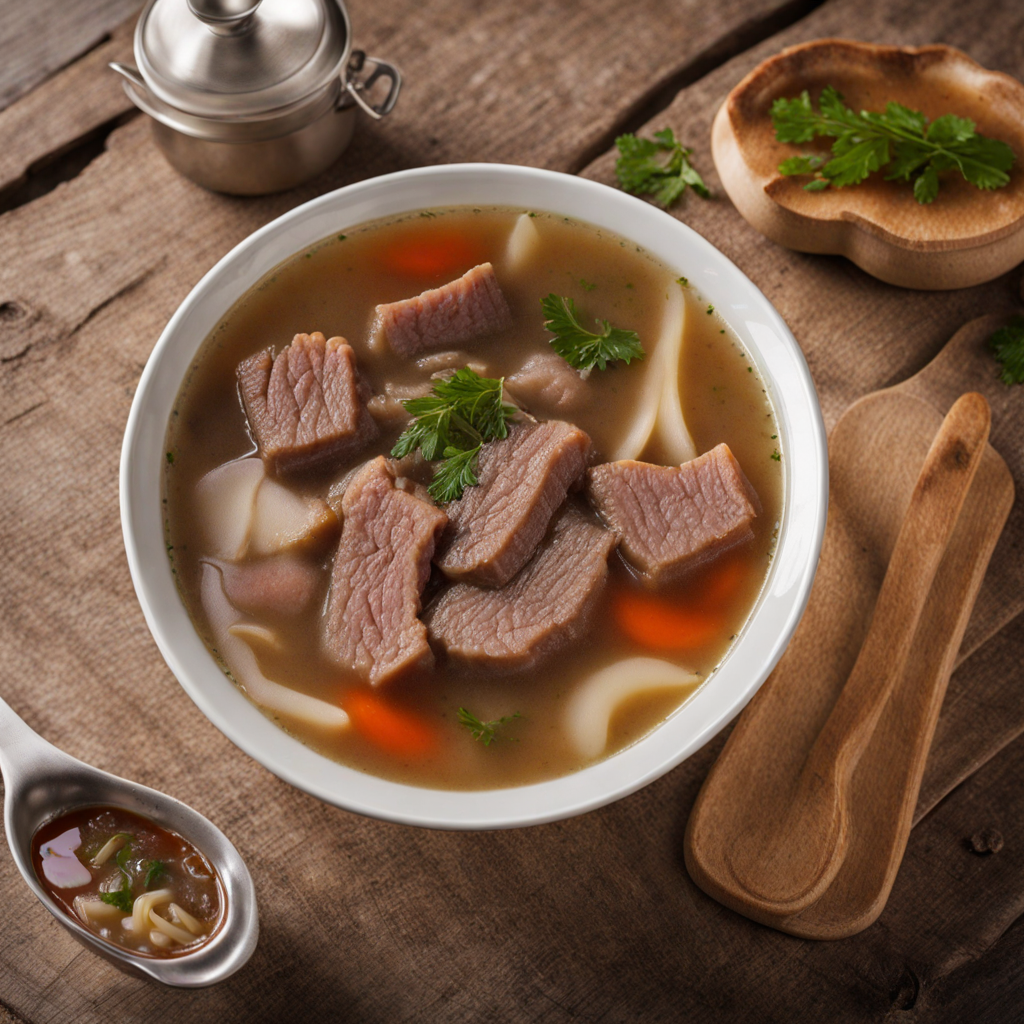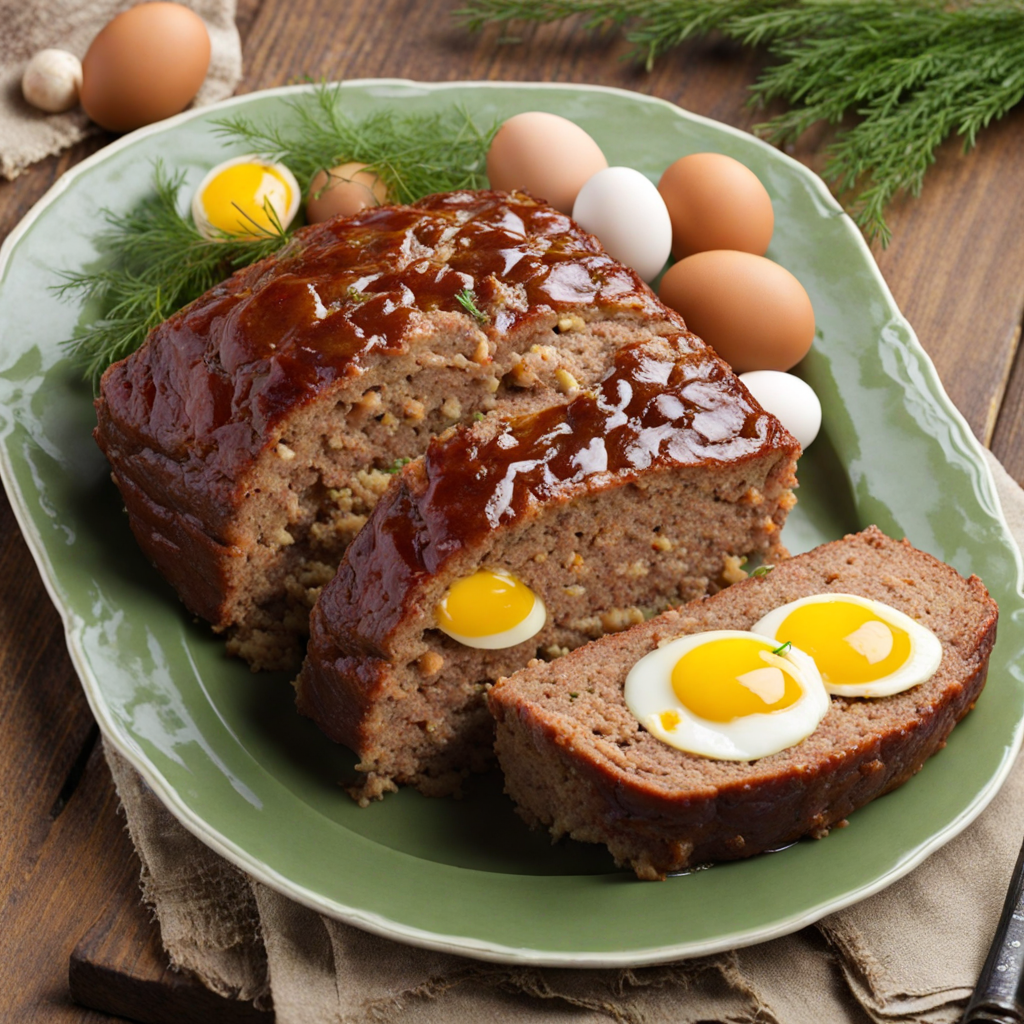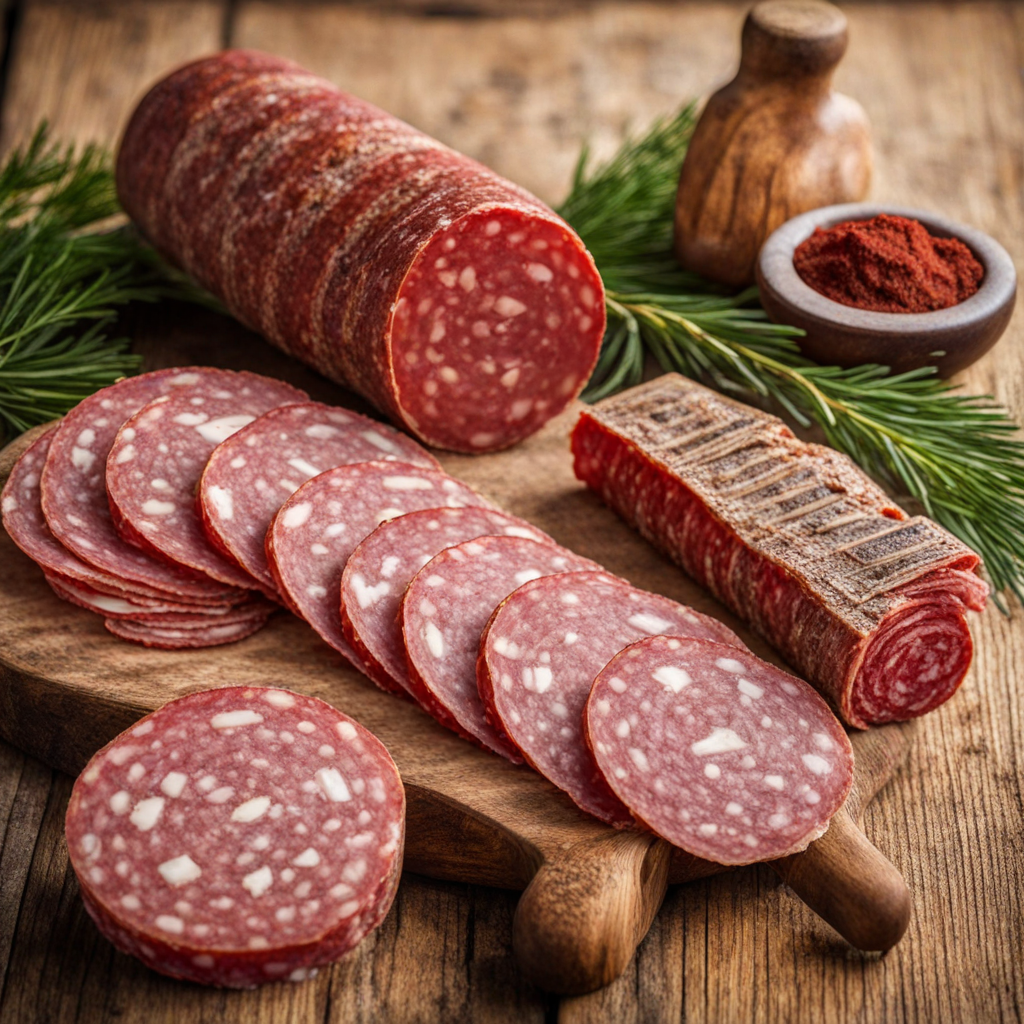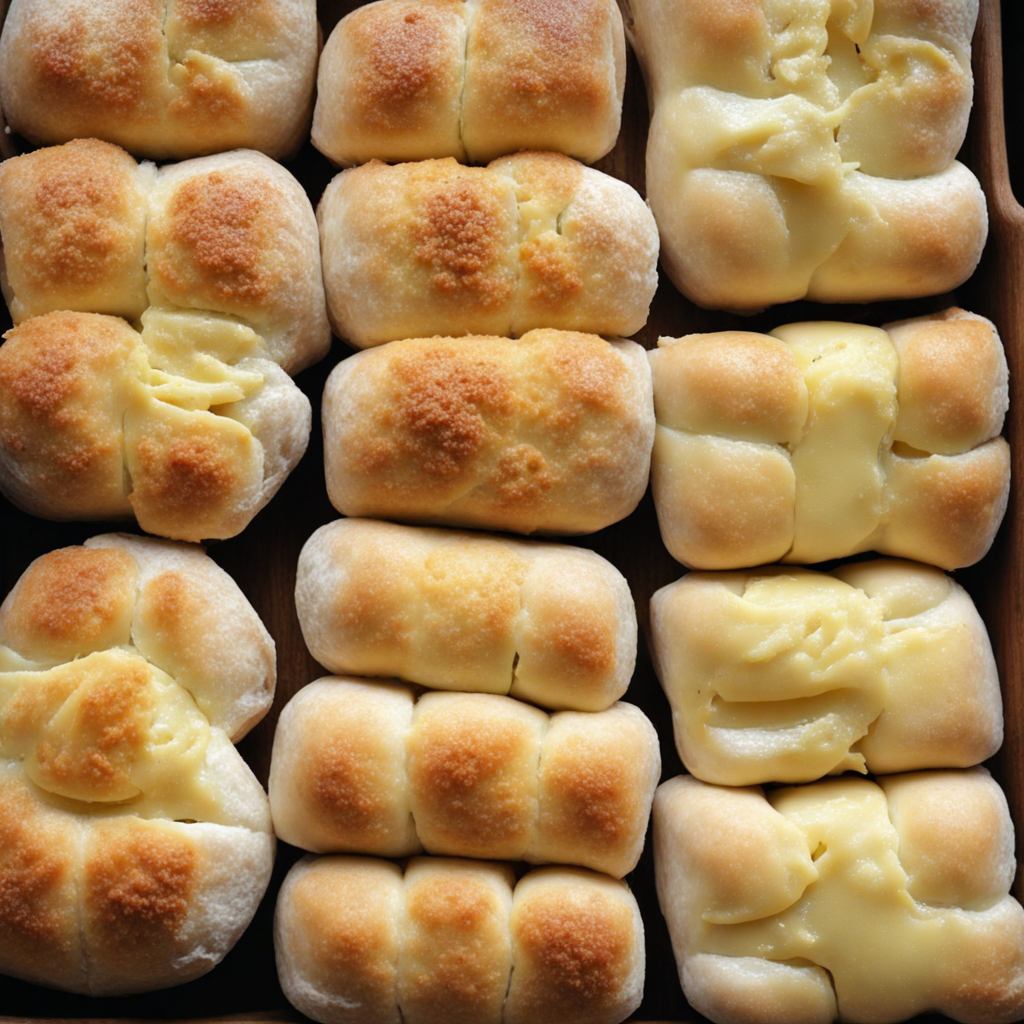Beef Soup
Beef soup, or "goveja juha," is a cherished traditional dish in Slovenia that embodies the rustic charm and hearty flavors of Central European cuisine. This comforting broth is typically made by simmering tender cuts of beef, often with bones still attached, which enriches the soup with a deep, savory essence. The long cooking process allows the flavors to meld beautifully, resulting in a rich and aromatic base that is both invigorating and satisfying. Fresh herbs such as parsley and dill, along with spices like black pepper and bay leaves, are commonly added to enhance the flavor profile, creating a dish that is as fragrant as it is nourishing. Accompanying the beef are a medley of vegetables, which may include carrots, celery, and potatoes, all chopped into bite-sized pieces. These vegetables not only contribute vibrant colors to the dish but also add their own natural sweetness and texture, making each spoonful a delightful experience. The soup is often served with homemade noodles or dumplings, which soak up the flavorful broth, creating a perfect marriage of textures and tastes. This wholesome combination makes goveja juha a go-to comfort food, especially during cold winter months. In Slovenian culture, beef soup is often enjoyed as a starter during special occasions or family gatherings, highlighting its significance in traditional culinary practices. Each family may have its own variation of the recipe, passed down through generations, allowing for personal touches and unique flavor adaptations. Whether enjoyed on a chilly day or served at a festive gathering, beef soup is not just a meal; it is a warm embrace of Slovenian heritage, inviting you to savor every sip and experience the heart of Slovenian hospitality.
How It Became This Dish
Goveja Juha: A Culinary Journey Through Slovenia Introduction Goveja juha, or beef soup, is a beloved traditional dish in Slovenia, embodying the country’s rich culinary heritage and its profound connection to the land and its history. This hearty soup, often served as a starter in formal meals or enjoyed on its own, reflects the agricultural roots and communal values that are integral to Slovenian culture. To understand goveja juha is to explore Slovenia’s past, its people, and the evolution of its cuisine. Origins and Historical Context Slovenia's culinary history is deeply intertwined with its geography. Nestled in the heart of Europe, Slovenia has been influenced by various cultures, including German, Hungarian, and Italian. The country's diverse landscapes – from the Alps to the Mediterranean coast – provide a rich bounty of ingredients that have shaped local diets. Goveja juha likely has its roots in the agrarian practices of the Slovenian countryside, where livestock farming has been a staple of rural life for centuries. Beef, being a readily available protein source, became a central ingredient in many traditional dishes. Historical records suggest that soups and broths were integral to Slovenian meals as early as the Middle Ages, wherein they served as a means to stretch limited resources while providing nourishment. The popularity of goveja juha can be traced back to the traditions of home cooking, where families would use available ingredients to create flavorful, sustaining meals. The practice of simmering beef bones and cuts with vegetables reflects a common European practice of making stock, which was not only economical but also maximized the flavor of the ingredients. Cultural Significance In Slovenia, goveja juha is more than just a dish; it is a symbol of hospitality and community. Traditionally, it is served during family gatherings, holidays, and celebrations, reinforcing the importance of food as a medium for social connection. The act of preparing goveja juha often involves multiple generations coming together in the kitchen, passing down recipes and techniques that have been honed over time. The soup is also a staple during festive occasions, such as weddings and Christmas. It embodies the spirit of sharing and togetherness, acting as a unifying force that brings families and friends around the table. In many Slovenian homes, it is customary to follow goveja juha with a hearty main course, such as beef stew or dumplings, creating a multi-course meal that showcases the depth of Slovenian cuisine. Moreover, goveja juha has found its way into Slovene literature and folklore, representing comfort and warmth. It is often mentioned in stories and songs, highlighting its role in Slovenian identity. The soup is emblematic of the Slovenian phrase "Dober tek," meaning "Enjoy your meal," which reflects the culture's appreciation for good food and conviviality. Development Over Time As Slovenia transitioned through various political and social changes, so too did its cuisine. The 20th century brought significant alterations to food practices, particularly following World War II. With the advent of industrialization and urbanization, traditional foodways began to shift. While goveja juha remained a cherished dish, changes in availability and accessibility of ingredients led to adaptations in how it was prepared and consumed. In the latter half of the 20th century, Slovenia experienced a culinary renaissance. The rise of interest in traditional foods saw a revival of goveja juha, with many chefs and home cooks returning to the roots of Slovenian cuisine. Chefs began experimenting with modern techniques while respecting the traditional elements that define the dish. Ingredients were sourced locally, fostering a renewed appreciation for the rich agricultural landscape of Slovenia. During this time, the focus on organic and sustainable farming practices also influenced the way goveja juha was prepared. Farmers' markets became popular, allowing cooks to access fresh, seasonal ingredients, which in turn enhanced the flavor profile of the soup. The use of locally sourced beef and herbs, such as parsley and lovage, became commonplace, further enriching the dish’s connection to Slovenian terroir. Modern Interpretations Today, goveja juha continues to reign as a quintessential Slovenian dish, with both traditional and modern interpretations being celebrated. While the classic recipe includes beef, root vegetables like carrots and celery, and various herbs, contemporary chefs are increasingly experimenting with flavors, incorporating ingredients such as smoked paprika or even Asian spices to create fusion versions of the soup. Moreover, the rise of the slow food movement has rejuvenated interest in traditional cooking methods. Many Slovenians are now returning to the practice of slow cooking, allowing goveja juha to simmer for hours, which results in a richly flavored broth. This emphasis on time-honored techniques not only honors culinary heritage but also fosters a deeper appreciation for the food. Conclusion Goveja juha is more than just a bowl of soup; it is a narrative woven into the fabric of Slovenian culture. Its origins reflect a history of resourcefulness and community, while its evolution showcases adaptability and innovation in a modern context. As Slovenia continues to embrace its culinary identity, goveja juha stands as a testament to the enduring power of food as a connector of people and traditions. In Slovenia, every spoonful of goveja juha tells a story – of the land, the people, and the shared moments that bind them together. Whether enjoyed on a cold winter’s day or at a festive gathering, this hearty soup remains a cherished part of Slovenian life, embodying the essence of comfort and connection that food provides.
You may like
Discover local flavors from Slovenia


